We will be publishing a number of statistics for the United Kingdom (and the European Union) over the next few days in the run up to a major piece we will be publishing on the real economics of Brexit.
Montenegro, the former Yugoslav Republic of Macedonia, Albania, Serbia, Turkey, Bosnia and Herzegovina and Kosovo are countries on the road to join the European Union.
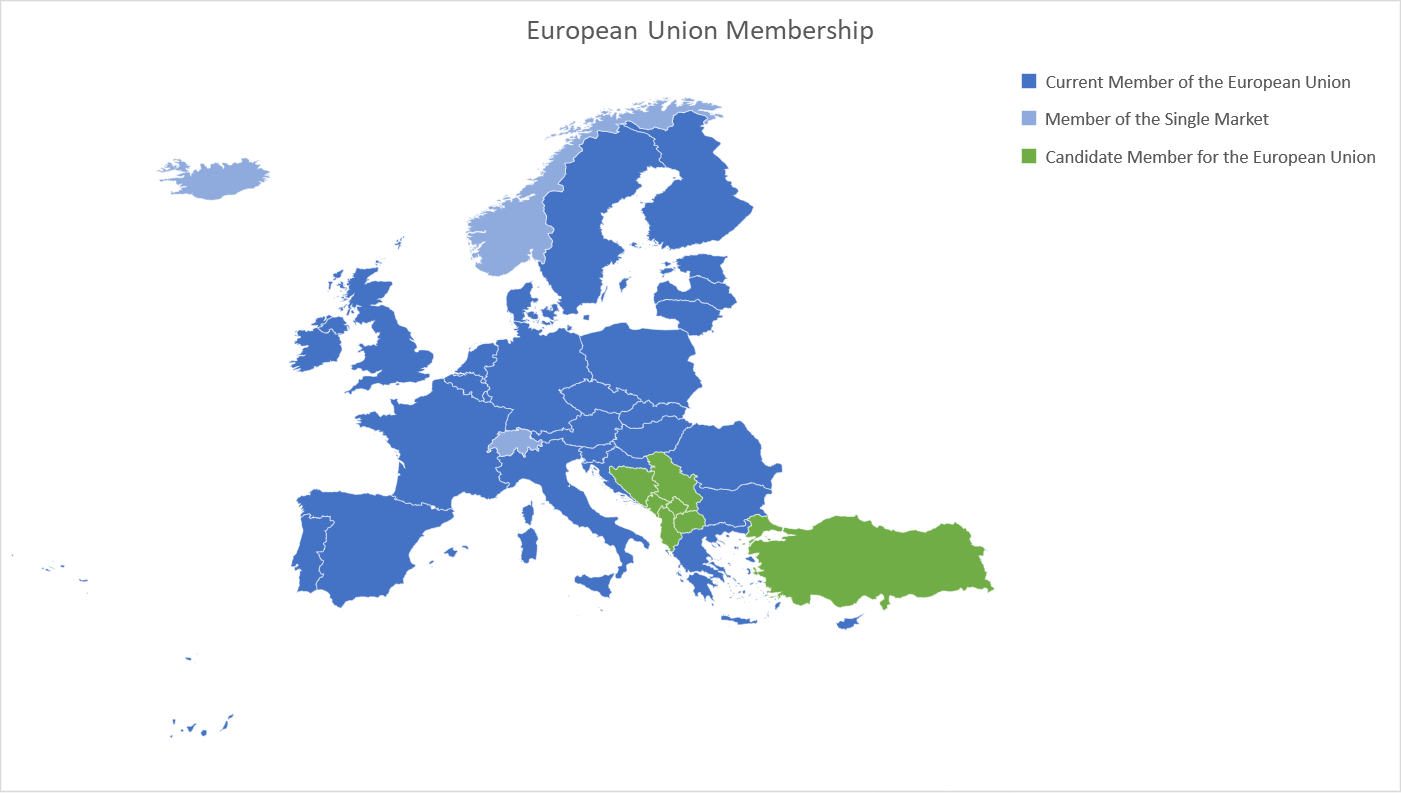
The following countries are current members of the European Union (EU),
Austria, Belgium, Bulgaria, Croatia, Republic of Cyprus, Czech Republic, Denmark, Estonia, Finland, France, Germany, Greece, Hungary, Ireland, Italy, Latvia, Lithuania, Luxembourg, Malta, the Netherlands, Poland, Portugal, Romania, Slovakia, Slovenia, Spain, Sweden and the United Kingdom.
The European Economic Area (EEA)
The EEA includes European Union (EU) countries and Iceland, Liechtenstein and Norway. It allows them to be part of the EU’s single market.
Switzerland is neither an EU nor EEA member but is part of the single market.
Demographics:
All the candidate countries (Montenegro, the former Yugoslav Republic of Macedonia, Albania, Serbia, Turkey, Bosnia and Herzegovina and Kosovo) have a larger youth population than the current European Union. But they also have a lower life expectancy at birth.
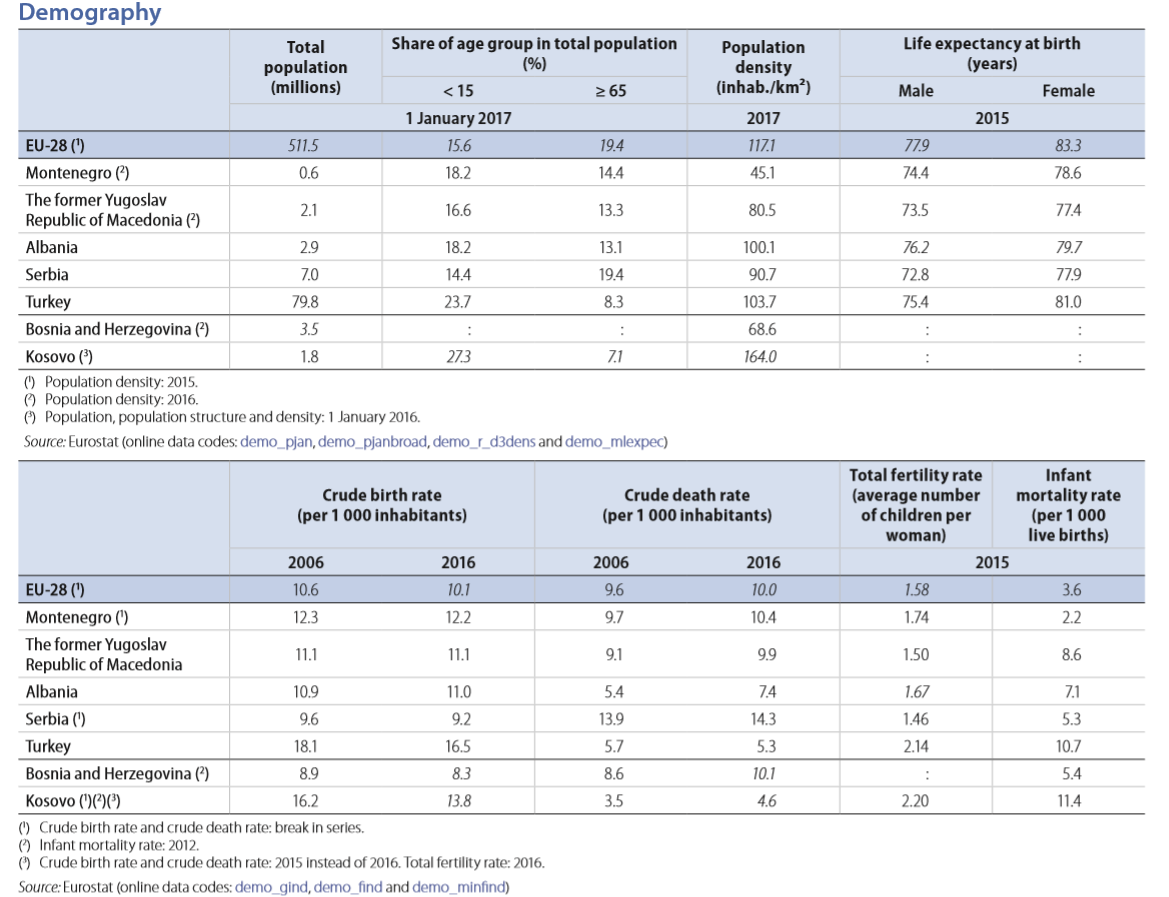
Labour Market:
All the candidate countries (Montenegro, the former Yugoslav Republic of Macedonia, Albania, Serbia, Turkey, Bosnia and Herzegovina and Kosovo) have a lower employment rate and a significantly higher unemployment rate and youth unemployment rate than the current European Union.
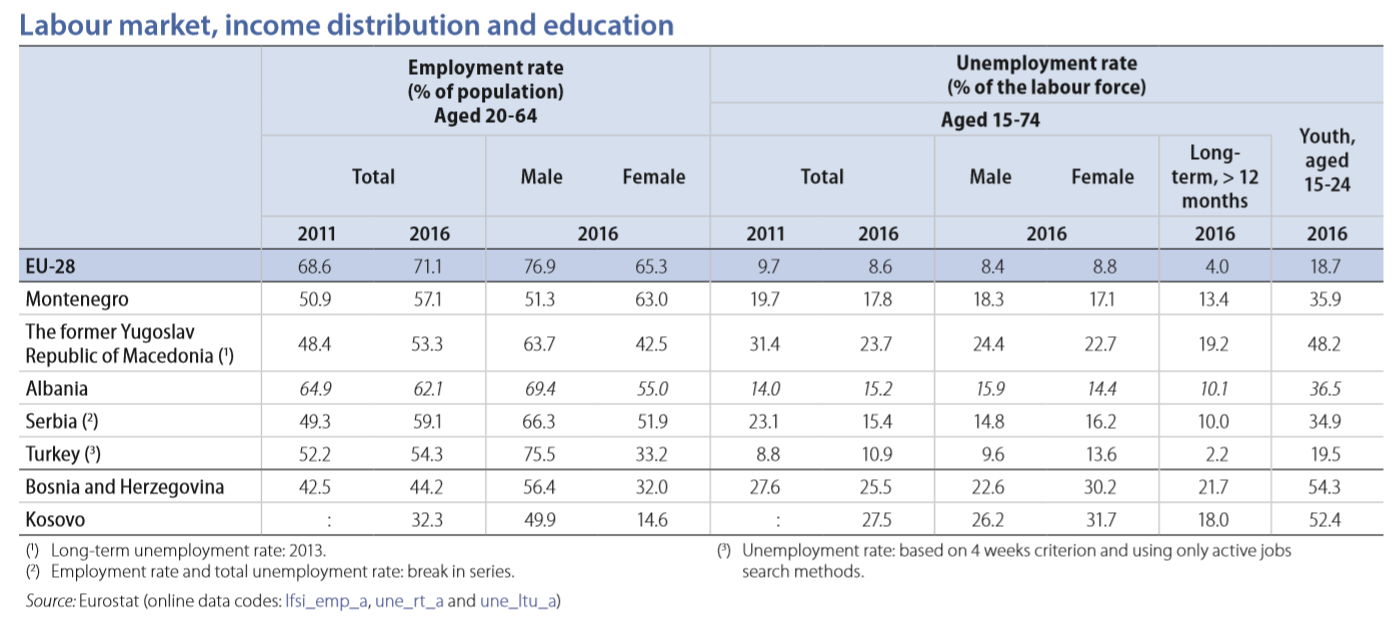
Economy:
Most of the candidate countries (Montenegro, the former Yugoslav Republic of Macedonia, Albania, Serbia, Turkey, Bosnia and Herzegovina and Kosovo) are growing at a faster pace than the European Union but most also have a higher budgetary deficit (as percentage of GDP) than the European Union.
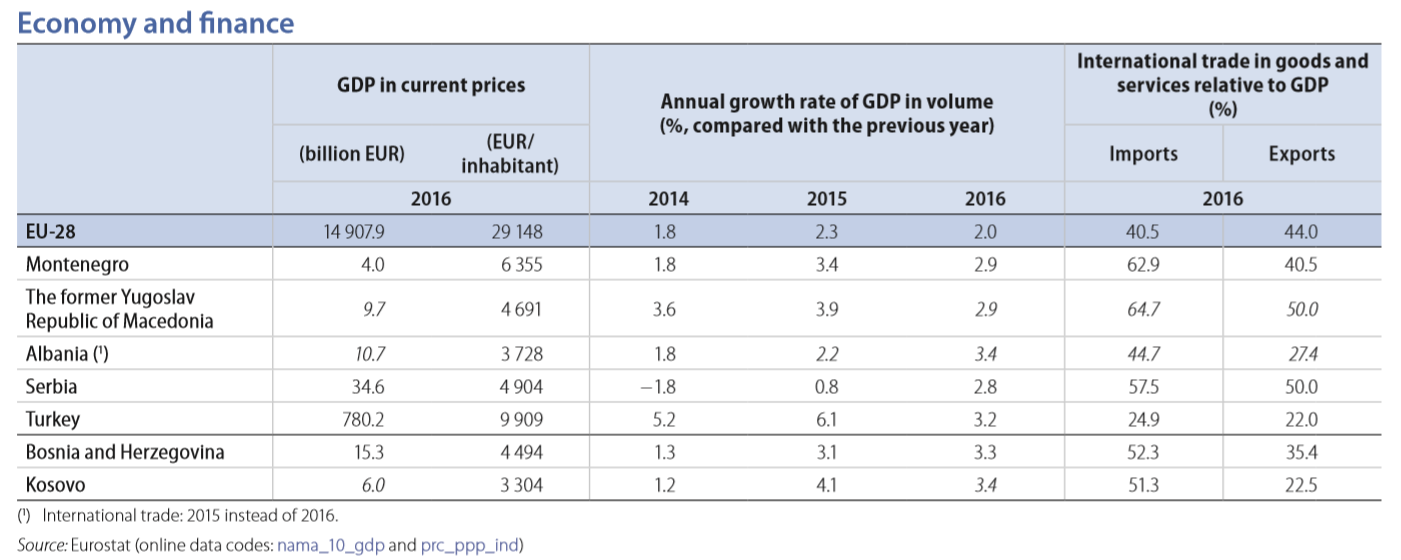
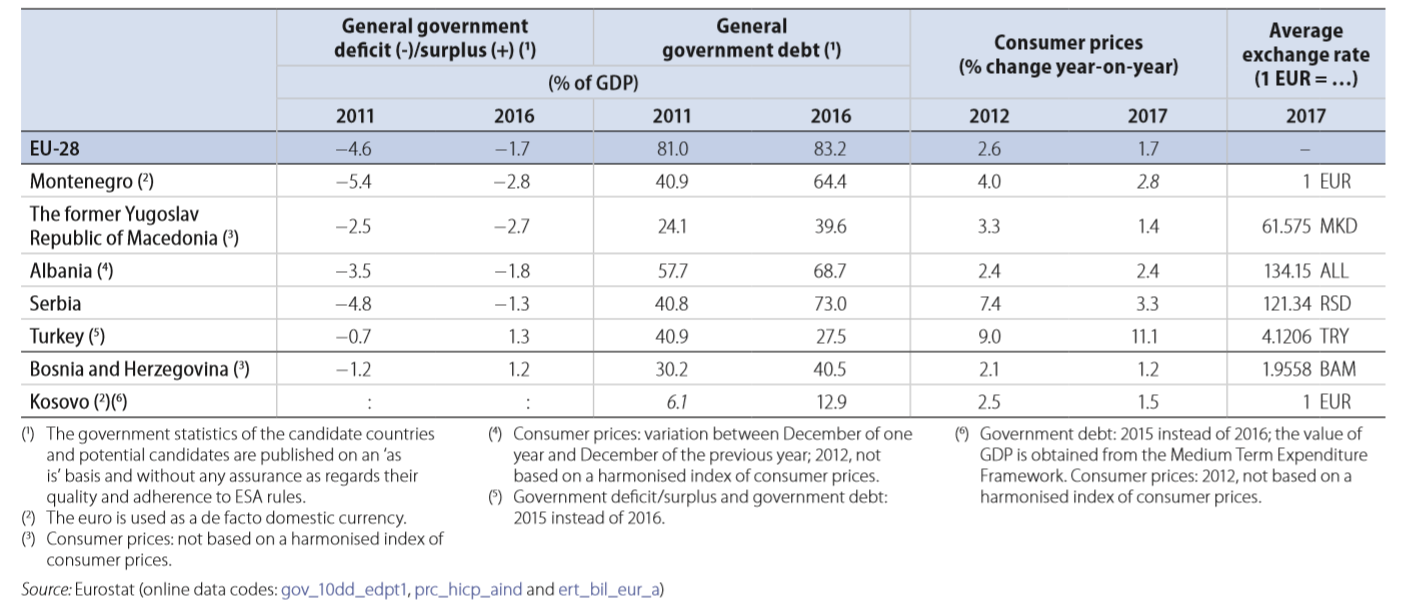
Related – Focus Brexit:
Past, present, future – some demographic and economic statistics for the European Union